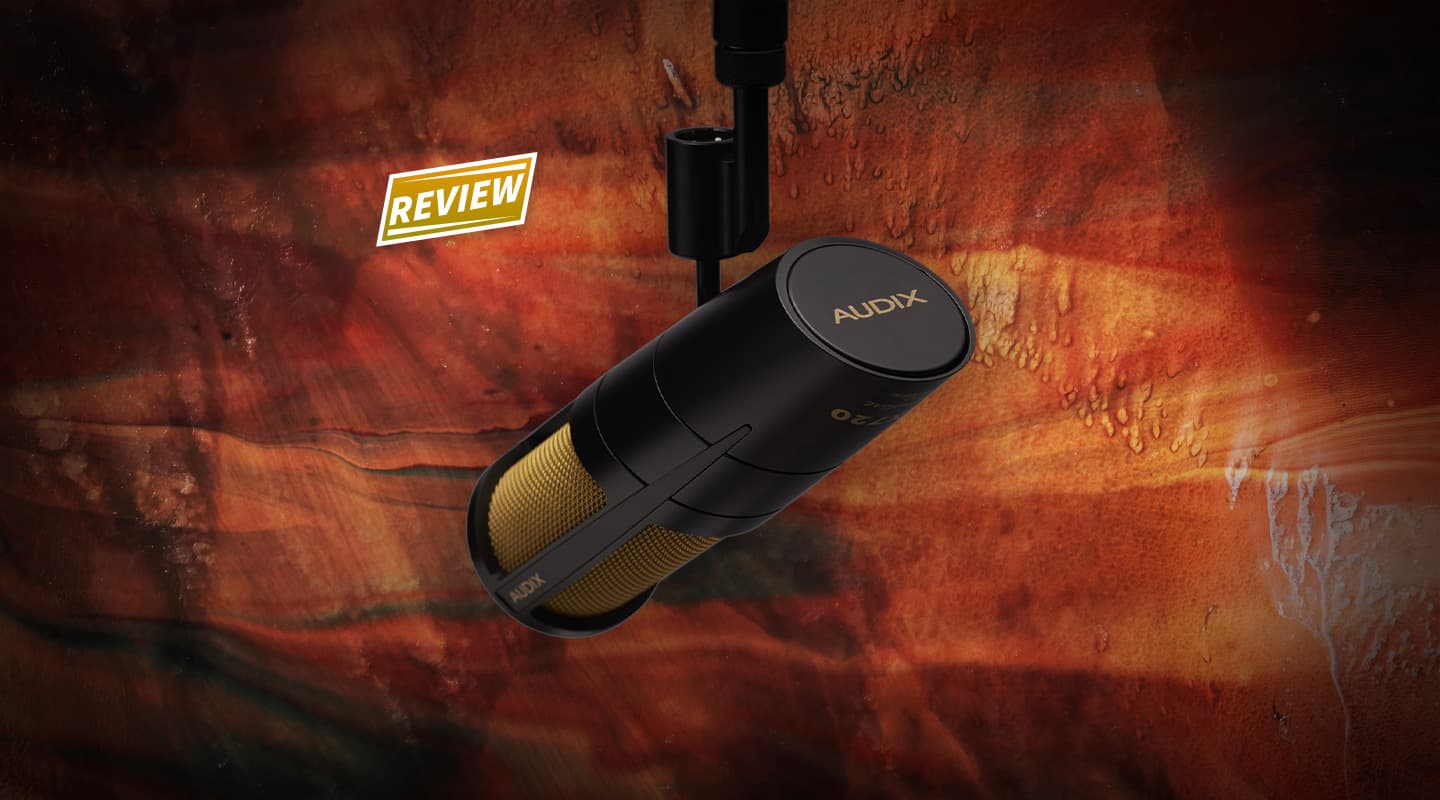
Review: Audix PDX720 Signature Edition
A sharp-looking dynamic mic that’s both characterful and versatile.
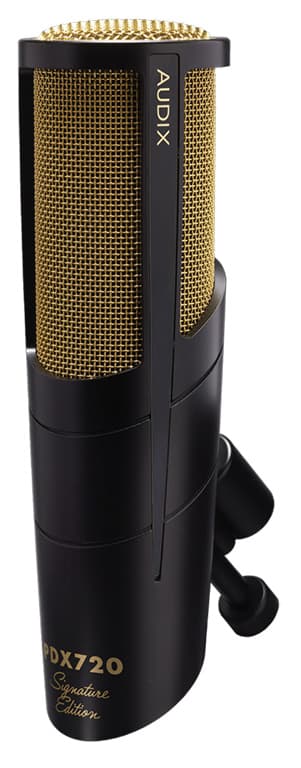
The world isn’t short on content creator-friendly end-address dynamic microphones. In fact, the market is more saturated with this type of microphone than it has ever been. But not many distinguish themselves aesthetically like the handsome Audix PDX720 Signature Edition. And in our content creation age, looks matter nearly as much as sound.
Whoever designed the PDX720 at Audix must come from an aeronautical or automotive background. The sweeping lines and sleek angles make it look like it’s ready to sail through the air, and it’s a pleasing variation to a boring black cylinder. Neatly concealing the switches on the rear of the mic is a branded cover that snaps into place with magnets. Painting the grille gold was a risky call but totally worth it. Hey, if I spend $1499 on a mic a gold grille is practically a necessity.
On that note, let’s address the elephant in the room – yes, the PDX720 goes for AU$1499. That’s a lot of money. And it’s the first clue that the PDX720 is a serious performer, not another one of those over-hyped $200 mics aimed at bedroom podcasters (nothing wrong with bedroom podcasters, of course).
No, the PDX720 occupies the same space as the venerated greats – think the Shure SM7B and Electro-Voice RE20. That also means it’s a general purpose dynamic mic and, like the aforementioned examples, it’s designed to perform well on instruments as much as voice.
CRUNCH THE NUMBERS
On paper, the Audix PDX720 specifications state a hypercardioid polar pattern, frequency response of 50Hz-20kHz, 280Ω output impedance, 1.9mV/Pa input sensitivity at 1kHz, and a maximum SPL of 135dB. The mic weighs a whopping 869g and is 212mm long. Onboard controls include a two-stage low cut filter at 120Hz/155Hz, and a 1.5dB/3dB presence boost. According to the frequency response graph it’s a wide boost ranging from around 2kHz-9kHz. Also interesting is the 80Hz bump when the low cut filter is off. At all settings the response line tapers steeply downward from 10kHz.
Being a dynamic capsule, the PDX720 operates completely passively and doesn’t feature a built-in gain boost. In fact, its output is around 5-7dB higher than the Shure SM7B in my comparison tests, so unless you intend on recording whisper quiet sources, rule out the need for a Cloudlifter or similar. But it’s still a dynamic mic so don’t expect the same level as a typical condenser.
To begin with, I recorded several tests on my voice with the PDX720. With the filter and HF boost flat, my impressions aligned with what the frequency response graph suggests – a boost in low mids up to around 1kHz after which the response remains largely flat before it drops off at 10kHz. On my voice this resulted in a fairly bland and nasal tone, and plosives rumbled noticeably with the extra low-end presence. After engaging the 155Hz low cut filter and popping the presence boost on to +3dB, the results were instantly more impressive, refined and ‘together’. Not only did the plosives reduce significantly but the presence boost brought a clarity to the tone without any trace of thinness.
A couple of notes on the polar pattern: Being hypercardioid, proximity effect is alive and well in the PDX720. On any kind of voice application, getting up close will yield a lush low end with that pronounced 80Hz bloom which can work beautifully when tracking an intimate sung vocal or a big-bottom broadcast tone. Beware the plosives, however – if you want to really exploit the PDX720’s proximity effect, use a pop filter. But for flatter, more natural results, put 5-10cm distance between mouth and grille. The low frequencies tidy up, as do the plosives, and it’s a nice, forward, present tone that’s comparable to an SM7B on rock vocals.
I’d also add that I found the hypercardioid polar pattern feels fairly wide, certainly wider than the SM7B, but whatever off-axis sound might leak into the PDX720 is tonally accurate and natural. This was noticeable both in recordings where I could hear more of the room with the PDX720, and on stage where the PDX720 was slightly more susceptible to bleed and feedback.
NEED TO KNOW
Audix PDX720 Signature Edition
Dynamic Microphone
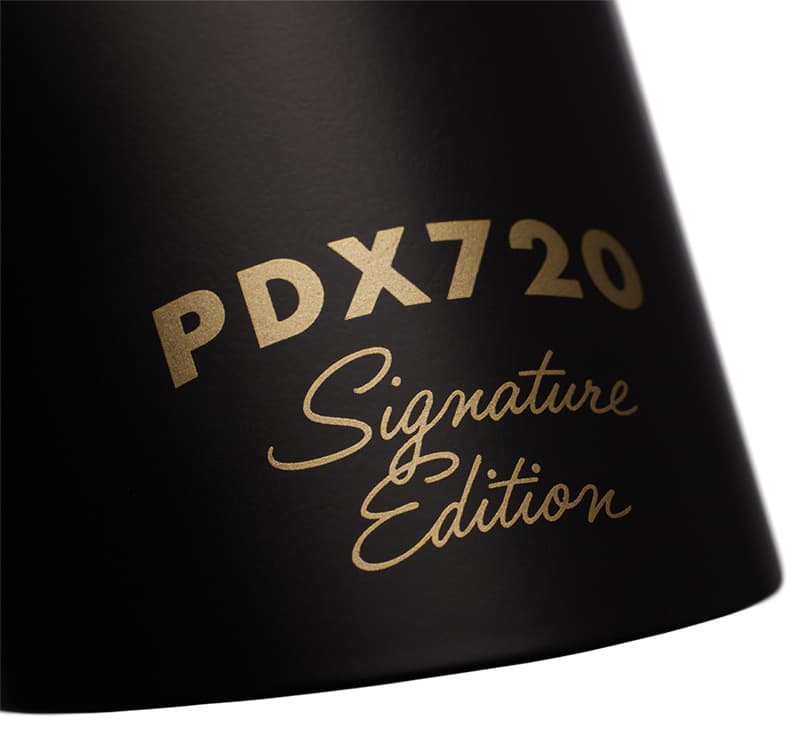
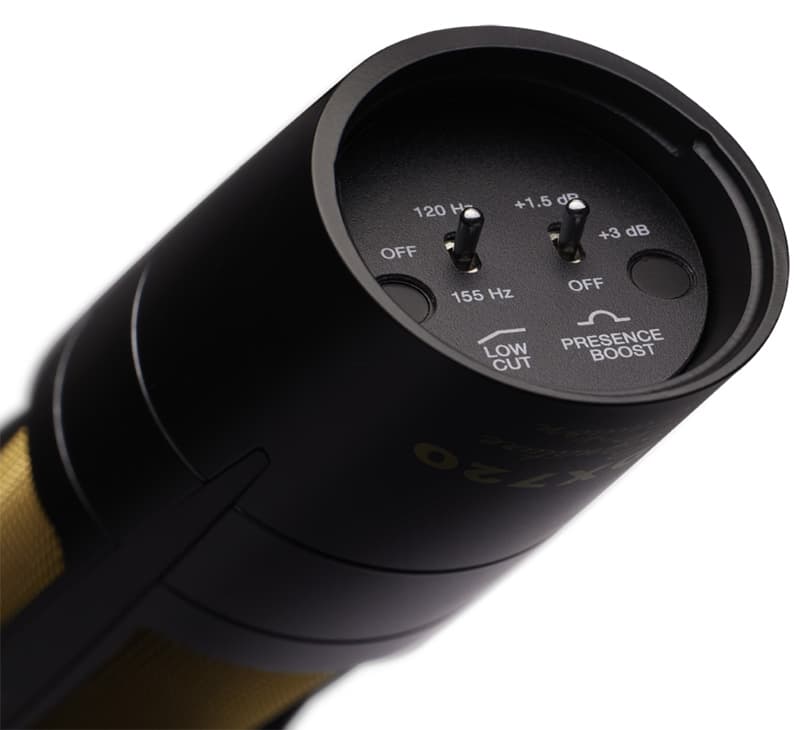
PULLING STRINGS
Results on acoustic guitar surprised me. For a dynamic mic, the PDX720 offers a condenser-like amount of detail with the smoky charm of a ribbon mic. Leaving the low cut disengaged gave predictably bottom heavy tracks, especially on my big ol’ Martin acoustic. Setting the filter to 155Hz and picking between the 1.5dB or 3dB presence boost gave me a tighter, woody, earthy tone that immediately reminded me of a beautiful Royer I reviewed a while ago.
Since I’ve already likened the PDX720 to a ribbon mic in its voicing, you can imagine that it’s a prime contender for amp cabinets as well. The rapid high-end rolloff above 10kHz eliminates excess jangle on clean tones and nasty fizz on distortion, drawing you into the meaty low mids. Like a ribbon, this is sometimes at the risk of sounding muted or lumpy, but a high shelf EQ boost in the mix will sort this out – besides, I always prefer adding treble to a dark source rather than the other way around.
While I couldn’t steal a brass player to test the PDX720 on, I’ve no doubt the mic would excel on trumpet, saxophone, and horns in general. An SPL ceiling of 135dB is reassuring in such instances. Snare drum is another ideal application – you’ll get a nice thud in the lows and a tight crack with the presence boost.
The more I tried the PDX720 on different sources, I came to appreciate how much the presence boost alters the tone of the mic. It’s precisely because the boost covers such a wide frequency area (from roughly 2-10kHz) that it changes the mic’s response enough to give you a markedly different ‘flavour’. Sometimes I’d leave the presence boost off to capture a darker, moodier tone on strings or a guitar amp. Other times it felt right to engage the boost and inject a source with a high-mid push. The option is particularly handy when tracking instruments – I almost always had the presence boost set to +3dB on vocals.
VALUE PROPOSITION
I also appreciate the ergonomics of the PDX720. No doubt it’s a chunky beast but manoeuvring it into position is easy with the articulating arm that offers nearly 90° of rotation without the bulkiness of a Y-mount. With the switches positioned where they are, it’s usually easy to access them even while the mic is in position. And did I mention how good it looks?
My time with the Audix PDX720 proved that it’s way more than a podcast mic – it’s a competent and sonically characterful all-rounder in a recording studio environment. Yes, it’s expensive. For $1499, you could buy two SM7Bs, or one-and-a-half RE20s. What may be the deciding factor for you is its higher output level, unique tone, or voicing versatility. One thing’s for sure: you’ll stand out from the crowd.




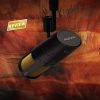

















RESPONSES